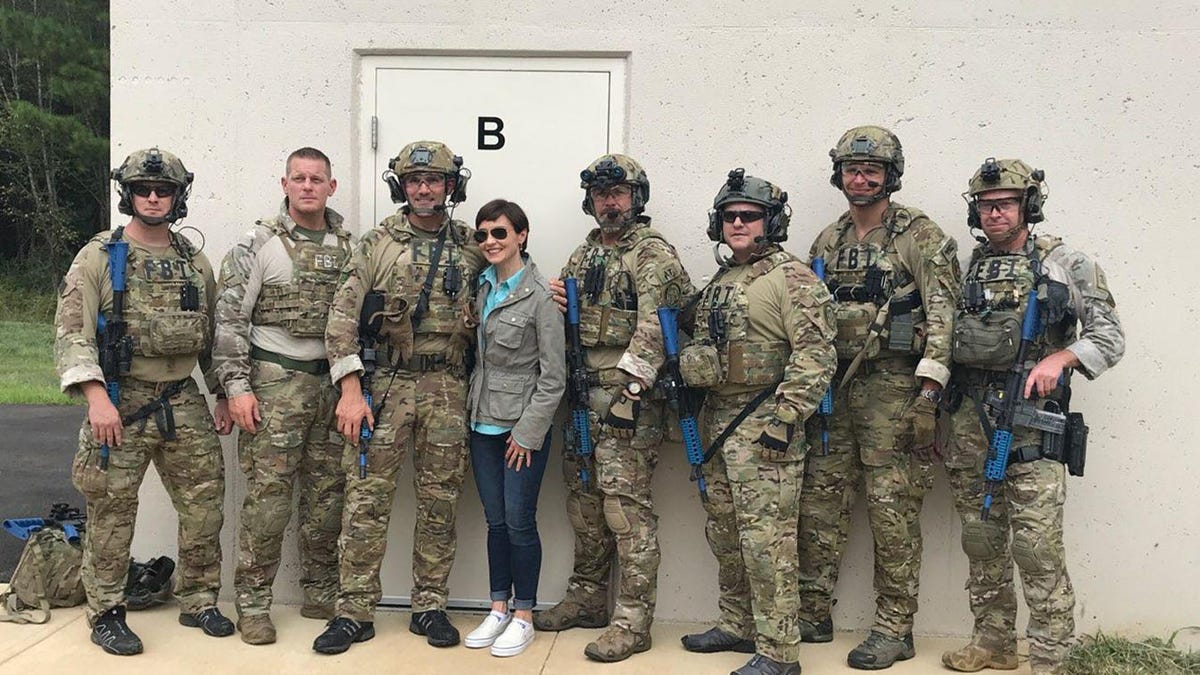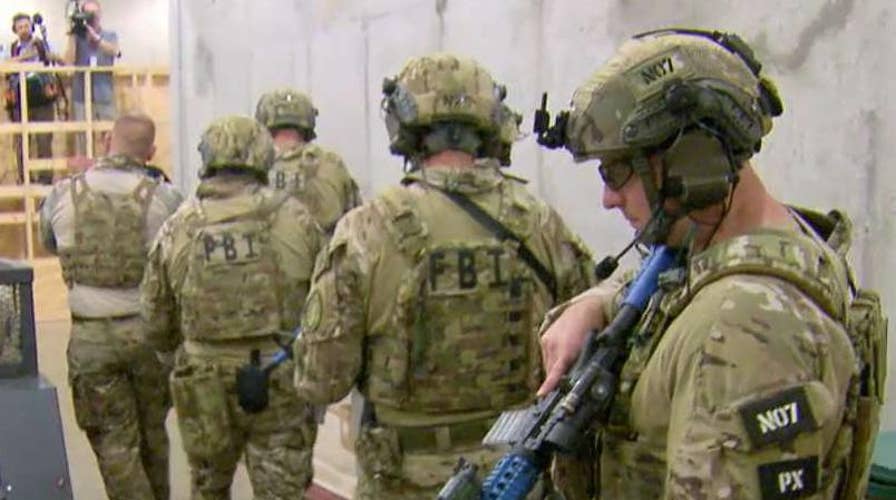Demand for FBI bomb technicians has never been greater
Fox News' Catherine Herridge goes inside the FBI's Hazardous Devices School in Huntsville, Alabama.
EXCLUSIVE – Seventeen years after 9/11, the demand for highly skilled bomb techs has never been greater because of the proliferation of homemade bombs based on internet manuals, the director of the FBI's elite training school said in an exclusive interview with Fox News.
"There's suicide bombings, there's remote controlled bombs, there's command bombs, there's victim initiated bombs," said John Stewart, the director of the FBI's Hazardous Devices School. "All of that we have to practice and train on here because we don't know what we're going to encounter."
Located on the sprawling and highly secured Redstone Arsenal in Huntsville, Alabama, the Hazardous Devices School, or HDS, has certified more than 20,000 local, state and federal first responders.
"It takes a drive. It takes a desire to want to help people," Stewart said of those at the school. "You have to have some mechanical skills. You have to be able to get thoughts from your brain to your hands. You have to be able to improvise relatively quick because when you're dealing with an improvised explosive device, the word improvised means there's no set standard on it."
A team from Fox News recently had unprecedented access to the training, and saw firsthand how bomb techs learn to handle the shock waves and operate under extreme conditions and pressure.
"Right now there's about 2,900 that protect us across America. And they all come to here for their initial training," Stewart explained. "The certification course where we take them from a police officer or firefighter with no background to a position where they can successfully navigate their way through an IED call is six weeks long, 30 days of training."

Fox News' Catherine Herridge with the Tactical Special Agent Bomb Techs from the Hazardous Devices Training School in Huntsville, Alabama. (FBI photo)
The FBI team takes a rigorous and measured approach.
"We start 'em on the very basics," he said. "We like to say their 'crawl, walk, run phase.' So we'll start them on very basic stuff and then work them through to more sophisticated IED problems so at the very end of the course they're running full training scenarios just like they would encounter in their hometown."
Rebecca Miller, an FBI intelligence analyst at the school, has focused the last four years of her career specifically on the improvised explosive device threat.
UNPRECEDENTED ACCESS TO THE ELITE FORENSIC TEAM AND THE IEDS THAT SHAPED GLOBAL SECURITY
She said she tells bomb tech trainees "you may never see any of this in your career... You may not see a Boston. You may not see a San Bernardino. But Monday, when you go home, you might."
Miller added, "So let's not get complacent. Stay on your game. Stay focused. Stay trained. And stay safe."
She said the training is driven by foreign and domestic intelligence.
"On a daily basis, I go through as much intelligence reporting as I can get my hands relative to IED-related events," Miller said. "And then I take that information and look for trends, patterns, emerging threats."
Intelligence is also shared by the neighboring FBI lab that analyzes improvised explosives devices known as TEDAC -- the Terrorist Explosive Device Analytical Center.
"We look at that threat stream-- what types of explosives are being used in IEDs, what types of containers are being used in IEDs," said Ian Vabnick, the head of research and development for the counter IED unit. "Some of that information is coming from the field. If they see a device of unusual design or we start to see a trend... that all comes to us and then we try to assess whether our current procedures and technology can address that threat."
Bomb tech have embedded with SWAT teams since the 2013 Al Qaeda-inspired Boston Marathon bombing, where pressure cooker bombs killed three and injured several hundred others.
During a visit to the school, Fox News participated in a top-tier drill called a "category A." In the drill, a hostage has a live device strapped to the person's chest, as well as a "dead man's switch" which detonates if the hostage becomes incapacitated or unconscious.
"Removing a hostage device is obviously the riskiest. The riskiest procedures that we do are manual and hands-on," said a member of the SWAT team, whose identity is withheld for security reasons. "And havin' bomb techs integrated with tactical teams just seems to make sense to address the emerging threat."
In March, a serial package bomber killed two and injured five in Austin, Texas -- a trend the FBI team is tracking.
"We have seen probably an increase in parcel bombs," Miller, the intelligence analyst, said. "That has been happening maybe since the mid-2016 timeframe. We have seen an increase in high explosives and people making their own explosives that are very sensitive, that are very volatile."
Stewart and other team members said common training and standards matter.
"What that does is allow everybody in the community to train and speak the same language, use the same tactics, techniques, and procedures so when we do have an incident like Boston, like the Austin bombings and we have to surge bomb techs from surrounding municipalities, they can work together, integrate together much more seamlessly, and it provides the public another level of protection," he said.
Asked how they put on a bomb tech suit and walk downrange to get over a potentially deadly device, Lt. Chris King with the Jacksonville Sheriff's Office in Florida said the training is clear. He said the goal is "go remote, stay remote, but there are going to be timeframes where that just doesn't happen."
The Fox News team visited the school's memorial wall with King. One plaque is blank.
"Our goal," King said, is "to ensure that that plaque stays empty. That we don't have another name on that."
Fox News’ Pamela K. Browne contributed to this report.






